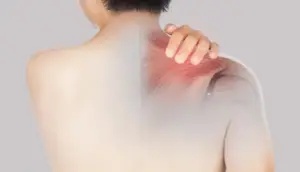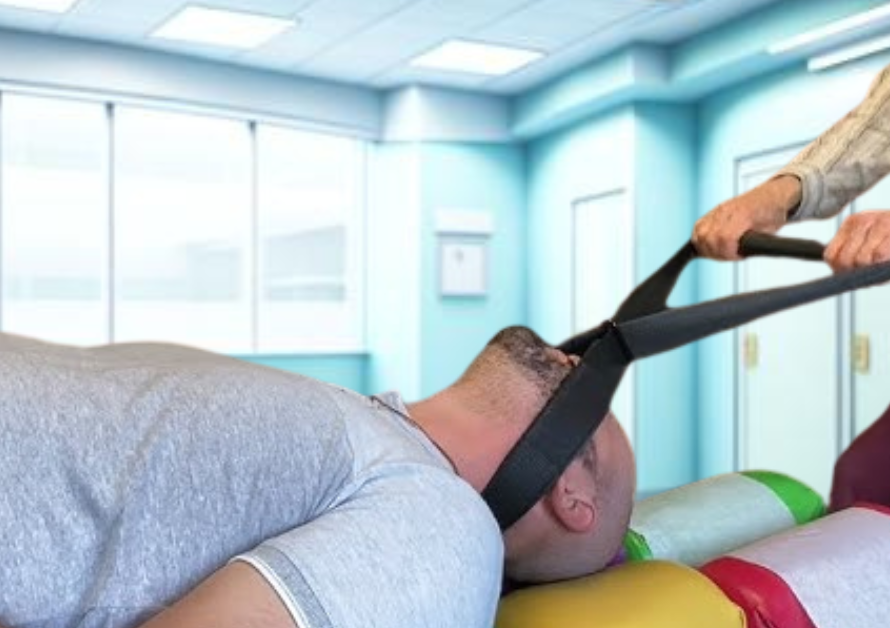Do you know about the muscles involved in the easy movement of your neck and head? You guessed right. Scalene muscles are a group of anterior, middle, and posterior muscles assisting in the movement of the neck and head and maintaining the position of the cervical spine.
In this blog, let’s understand scalene muscle trigger points, how to manage scalene muscle tightness and more.
What Are Scalene Muscle Trigger Points?
Scalene muscles are three paired muscles, viz. the anterior, middle, and posterior bones, located in the lateral aspect of the neck, connecting the neck bones to the first and second ribs.
These muscles aid in head and neck movement, respiration, and maintaining the upright position of the cervical spine.
When stressed due to poor posture or overuse, the underlying trigger points of scaled muscles get aggravated, leading to discomfort and pain.
Causes Of Scalene Muscle Trigger Points Development
Trigger points in the scalene muscles can develop due to various factors, including:
- Poor Posture
- Repetitive Movements
- Muscle Overuse
- Emotional Stress
- Injury or Trauma
- Imbalance in Muscle Strength
- Poor Ergonomics
Symptoms Associated with Scalene Muscle Trigger Points
Anterior Scalene:
The anterior scalene or scalenus anterior is a muscle placed deep inside and behind the sternocleidomastoid and belongs to the lateral scalene muscle group. It is located between the subclavian vein and the subclavian artery.
Functions:
- Individually, anterior scalene aids in side flexion of the neck.
- In association with middle and posterior scalene muscles, their bilateral contraction results in anterior flexion of the neck
- As a group, the muscles elevate the first rib and act as accessory muscles of respiration.
Symptoms of anterior scalene muscle trigger points:
- Arm Pain and Tingling
- Shoulder Pain
- Neck Pain
- Headaches
- Jaw Pain
- Difficulty Breathing and
- Muscle Tenderness and Tightness
Middle Scalene:
The middle scalene, or scalenus medius, is the largest and longest muscle in the group of scalene muscles. It is located on the lateral side of the neck and placed deep inside and behind the sternocleidomastoid.
Functions:
- Involved in cervical rotation
- In association with the anterior muscle, it elevates the first rib during respiration
- They are strong ipsilateral flexor muscles during unilateral respiration
Symptoms of middle scalene muscle trigger points:
- Cold
- Numb Hands
- Thoracic outlet syndrome due to compression of nerves or blood vessels in the lower neck
- Aneurysm in hand arteries – abnormal bulging in the diameter of artery vessels
- Pain in the surrounding areas of hand and arm
Posterior Scalene:
Posterior scalene or scalenus posterior is one of the scalene muscles located in the neck’s lateral aspect. It is located deep inside and behind the sternocleidomastoid.
Functions:
- Aids in the elevation of the second rib
- In association with the anterior and middle scalenes, it aids in side flexion and rotation
- Acts as an accessory muscle of inspiration
- Involved in cervical flexion and rotation
Symptoms of middle scalene muscle trigger points:
- Discomfort in the fingers
- Upper back pain
- Tiredness in the arm
- Numbness in the surrounding area of the shoulder and arm
Trigger Point Therapy For Scalene Muscles
At ASAP and Rehab, our chiropractors offer more personalized and effective trigger point therapy for scalene muscles.

Chiropractic care can be an effective approach for addressing trigger points in the scalene muscles. Chiropractors are trained to assess and treat musculoskeletal conditions, including trigger points, through manual manipulation techniques and therapeutic interventions. Here’s how chiropractic care may be utilized for scalene muscle trigger point therapy:
1. Manual Therapy Techniques:
Chiropractors often employ hands-on manipulation techniques like spinal adjustments, joint mobilization, and soft tissue manipulation to target trigger points in the scalene muscles and surrounding structures to restore proper alignment and reduce tension in the neck and shoulder region.
2. Trigger Point Release:
Chiropractors may perform specific trigger point therapy techniques, such as direct pressure or ischemic compression, to release tension and deactivate trigger points in the scalene muscles. Thus, it reduces pain and promotes relaxation in the affected muscles.
3. Myofascial Release:
Chiropractors may utilize myofascial release techniques, including gentle stretching and manual manipulation of the soft tissues, to address restrictions and adhesions in the fascia surrounding the scalene muscles, thereby improving circulation, reducing inflammation, and enhancing tissue mobility.
4. Stretching and Exercise Prescription:
Chiropractors may prescribe customized stretching and strengthening exercises to complement in-office treatments and support long-term recovery.
5. Postural Education and Ergonomic Advice:
Chiropractors often guide on maintaining proper posture and ergonomics to minimize strain on the neck and shoulders. Recommendations may include ergonomic modifications to workstations, ergonomic lifting techniques, and strategies for reducing repetitive stress on the musculoskeletal system.
6. Heat and Cold Therapy:
Chiropractors may incorporate heat or cold therapy modalities into treatment plans to help relax muscles, reduce inflammation, and alleviate pain associated with trigger points in the scalene muscles.
7. Lifestyle Modifications:
Chiropractors may offer advice on lifestyle modifications, such as stress management techniques, dietary recommendations, and sleep hygiene practices, to support overall musculoskeletal health and well-being.
Conclusion :
By understanding the role of trigger points in the scalene muscles and taking proactive steps to address them, you can effectively manage neck pain and improve your overall musculoskeletal health.
So, next time you feel that familiar cramp in your neck, contact ASAP and Rehab for some Tender Loving Care.


